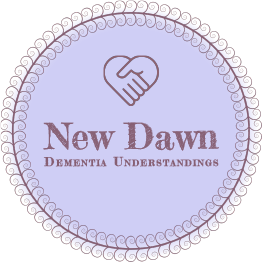KEEPING IN TOUCH WHEN WE CANNOT TOUCH
How do we keep in touch with our loved one living with Dementia when we must maintain social distancing? It’s an issue which many families, care facilities, and those living with Dementia are faced with these days. First, let’s remember that Touch is one of five senses or 20% of our sensory awareness. That leaves 80% for us to creatively use to stay in touch when we cannot touch.
First, let’s be clear that there is no “one size fits all” for those living with Dementia. Each person is an individual and will progress through the stages of Dementia differently. For those in an early stage, or those blessed with greater memory retention and cognitive function, Skype or Zoom calls, letters and greeting cards can be a great way to communicate from a distance.
For others living with Dementia it is not uncommon for them to be on a different timeline than ours. Through a loss of Episodic (Episode) Memory experiences, their reality may be one of being 40 years old, some 50 years ago. In their reality, on their timeline you are 12 years old, not 62 years old. For their comfort we should join them in their reality, on their timeline, not ours. It’s key to keep in mind where they are on their timeline before you embark on a creative project. Again, it’s their personal journey, so join them.
Go back through old photos and find some that coincide with their reality. If it’s 1953, find photos from that period and use those for your “in touch” project. You can always take a picture of the photo with your cell phone to use when ordering the item. If you choose to do a photo pillow or blanket, try giving it a spritz with a perfume or aftershave that was always their favorite. Perhaps a scent your mom wore that your dad loved, or vice versa. The sense of smell is part of the Limbic Memory and does not easily fade over time. Scents can be nostalgic and evoke comforting feelings. Did your mom like to bake? Try a sprinkle of vanilla extract on that new pillow. Was your dad a woodworker? Pack the new blanket in some cedar chips for a bit before wrapping it up to send. The sensory mingling of the sight of photos that they can relate to, combined with evocative scents and the comfort of hugging a pillow or blanket will help them to know you are there.
Purchase a storybook that allows you to record your own words. They can be obtained through most online book sellers. You can paste over the book’s pictures with your own recognizable family, old vacation, or memorable events photos, then paste over the text in the book with your own story, recording the words you have printed. Please don’t assume those living with Dementia cannot read. Reading is part of our Reflex Memory and is often an overlooked capability. Plain, large block letters work best. The sight of photos they recognize (on their timeline) can help pleasant feelings to surface. The sound of your voice will help them to know you are present in their lives. If your loved one recognizes your children as you at that age, then have the younger person record the story.
Find that old cookie or cake recipe that was a special favorite “back then”, bake up a batch and let their Limbic Memory evoke pleasant memories through taste.
While there may be no substitute for the comfort of a hug from a loved one, we are finding ourselves in uncharted waters these days. Finding ways to appeal to our senses of sight, smell, taste, and sound may help to fill some of that gap.
